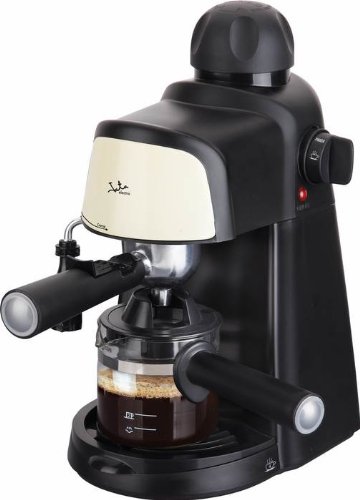There are a bunch of these machines which look pretty similar in a price range of €25 (Gifi) to €70. This one has a control board and 12V relay which turns off the heater after ~10 mins.

It had started producing little coffee. I descaled it and it was fine for a day, then a problem again. Having striped it, it seems scale had caught up in the narrow pipes in the control valve.
To strip it, you need to remove the control knob. This wont come off as it has a release lever you can't get to.
Remove the base. Triangle heads. Disconnect the blue and white wires to the heater. Remove the 4 screws way up inside.
Remove 2 screws under filler, and gently ease out the silicon seal.
Remove the 2 screws adjacent to the coffee holder
Wiggle the top bit, noting you cant remove it as the knob is in place. Remove 2 screws, 1 each side now visible below control knob.
The top piece and boiler are now free. Turn control knob until release lever (white) is visible inside black knob shaft. Press release and pull knob. I took some material off this so it holds ok, but can be removed with a good tug.
The boiler can be separated. Control part comes off revealing ceramic plates.
Took 3 hours with sulfamic acid (Casino descaler) to dissolve the scale. The boiler is aluminium and there was no noticeable change in the surface finish.
29/6/20 descaled. Filled with liquid twice and ran throigh. Left about 30 mins each time. Knob went very stiff, but ok once cooled.
31/7/20 stopped working. 21R safety resistor open circuit. Replaced with 22R 1/2W + 160mA fuse. Circuit part traced. Cap dropper + FWB, 5V + 12V rails. Looks like a pic - sanded top.




























